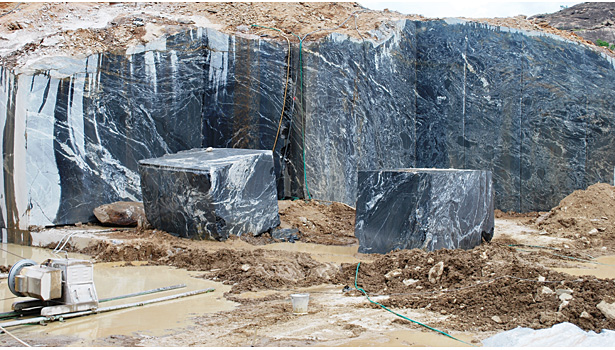Journeying Through Granite Quarries in South Africa: A Visual Odyssey
Journeying Through Granite Quarries in South Africa: A Visual Odyssey
Blog Article
Discovering the Rich History and Lasting Practices of Granite Quarrying
As we base on the precipice of revealing the elaborate tapestry of granite quarrying, a trip with time discloses not just the physical act of removing stone however additionally the cultural and historic significance woven into the really fabric of this method. From the old origins that laid the structure for modern-day quarrying techniques to the sustainable methods that are forming the future of this industry, each sculpt mark on granite surface areas narrates waiting to be discovered (granite quarries in south africa). The heritage of granite quarrying extends much past mere extraction; it is a testimony to human resourcefulness, resilience, and the enduring appeal of this majestic stone
Old Beginnings of Granite Quarrying
Going back to old civilizations, the method of quarrying granite has actually been an integral part of human history and architectural improvement. The earliest proof of granite quarrying go back to old Egypt, where huge pyramids and detailed sculptures were crafted from this long lasting rock. The Egyptians used primitive tools to remove granite blocks from quarries, showcasing the relevance of this product in their huge building and constructions.
Relocating onward in history, the Greeks also made significant contributions to the quarrying of granite. The Greeks used granite in various architectural marvels, such as holy places and statuaries, showing their ability in shaping and sculpting this durable rock. The Romans further refined the techniques of quarrying granite, employing advanced devices like knives and hammers to remove and form granite for their famous structures.
Through the centuries, the practice of quarrying granite has evolved, with modern-day innovations improving effectiveness while maintaining the timeless allure of this all-natural stone - granite quarries in south africa. From ancient civilizations to modern building contractors, the heritage of granite quarrying proceeds to shape our globe
Advancement of Quarrying Methods
The evolution of quarrying techniques has actually been marked by a continuous development towards greater performance and accuracy in extracting granite. From the rudimentary approaches utilized by our ancestors to the innovative modern technologies used in contemporary quarrying operations, the sector has gone through significant innovations. Early quarrying methods involved manual work with fundamental devices such as blades, hammers, and wedges to extract granite blocks from the planet. As worlds proceeded, methods like fire-setting and primitive explosives were presented to help with the removal process.
In even more current times, the introduction of equipment revolutionized the quarrying market, enabling quicker removal prices and enhanced performance. Technologies such as ruby wire saws, high-pressure water jets, and pneumatically-driven drills have actually become common in modern-day quarries, permitting specific cutting and reduced waste. Moreover, innovations in computer-controlled equipment and 3D modeling have enhanced quarrying procedures, bring about minimal environmental effect and boosted sustainability techniques. As the demand for granite remains to increase, the advancement of quarrying strategies continues to be integral to conference industry requires successfully and sustainably.
Social Relevance of Granite
Granite holds an extensive social relevance throughout numerous human beings as a result of its long-lasting existence in architectural masterpieces and prized monoliths. From the impressive pyramids of Egypt to the detailed makings of the Angkor Wat temple in Cambodia, granite has been a product of option for revealing grandeur and long life in social heritage. In ancient Rome, granite columns adorned holy places and public structures, symbolizing strength and durability. The cultural significance of granite expands beyond its check out here physical characteristics; it embodies strength, stability, and eternity, making it a sign of enduring heritages and customs.

Sustainable Practices in Quarrying
Among the rich history of granite quarrying and its social relevance lies an expanding focus on sustainable techniques within the market. As environmental recognition and worries about source exhaustion have enhanced worldwide, the quarrying sector has actually progressively embraced lasting click now methods to reduce its impact on the setting and surrounding areas.

Furthermore, reclamation and rehabilitation of quarry sites post-extraction are integral to sustainable practices. By recovering quarried locations to a natural or useful state, such as producing wildlife habitats or recreational rooms, quarriers can counter the ecological impact of their operations and contribute favorably to the neighborhood ecological community.
Heritage of Granite Quarrying
With a historic backdrop steeped in workmanship and commercial development, what enduring influence has granite quarrying left on the landscape of modern-day society? The legacy of granite quarrying transcends plain extraction practices; it has actually formed architectural wonders, urban landscapes, and This Site social heritage worldwide. The long lasting nature of granite has made it a recommended selection for monuments, structures, and facilities, standing as a testament to the ability and creativity of quarry workers throughout generations.
Additionally, the economic impact of granite quarrying can not be ignored. The industry proceeds to offer employment possibilities and drive regional economies in areas where granite extraction is widespread. It has additionally spurred technical improvements in quarrying techniques and tools, resulting in more reliable and sustainable methods.
In regards to sustainability, the legacy of granite quarrying consists of efforts to mitigate ecological influences through improvement tasks and responsible resource administration. By stabilizing financial interests with environmental stewardship, the market makes every effort to ensure that future generations can continue to gain from this long-lasting all-natural resource.
Conclusion

Report this page